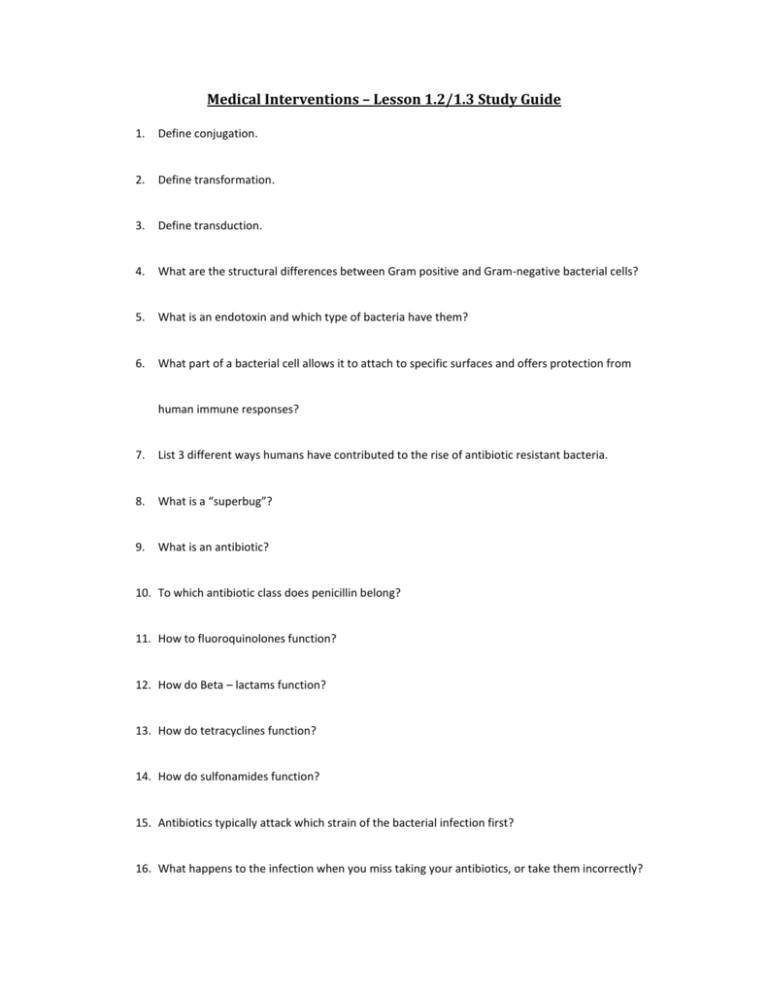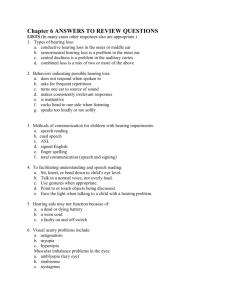1.2 & 1.3 test
advertisement

Medical Interventions – Lesson 1.2/1.3 Study Guide 1. Define conjugation. 2. Define transformation. 3. Define transduction. 4. What are the structural differences between Gram positive and Gram-negative bacterial cells? 5. What is an endotoxin and which type of bacteria have them? 6. What part of a bacterial cell allows it to attach to specific surfaces and offers protection from human immune responses? 7. List 3 different ways humans have contributed to the rise of antibiotic resistant bacteria. 8. What is a “superbug”? 9. What is an antibiotic? 10. To which antibiotic class does penicillin belong? 11. How to fluoroquinolones function? 12. How do Beta – lactams function? 13. How do tetracyclines function? 14. How do sulfonamides function? 15. Antibiotics typically attack which strain of the bacterial infection first? 16. What happens to the infection when you miss taking your antibiotics, or take them incorrectly? 17. How does not taking antibiotics as prescribed impact the health of others? 18. Why would antibiotics NOT help a person with a viral disease? 19. What structures are included in the outer ear? 20. What structures are included in the middle ear? 21. What structures are included in the inner ear? 22. What is the function of the ossicles? 23. What is the function of the tympanic membrane? 24. What is the function of the vestibule? 25. What is the function of the cochlea? 26. Where are the sensory hair cells located and what is their function? 27. How does loud music damage hearing? Specifically what structure(s) are affected? 28. What is sensorineural hearing loss? What parts of the ear/structures are affected? Repairable? 29. What is conductive hearing loss? What parts of the ear/structures are affected? Repairable? 30. What type of hearing loss do cochlear implants help with? What structures must be unaffected for this intervention to be successful? 31. How do hearing aids function? 32. When are hearing aids not an optional intervention? Normal Hearing Mild Hearing Loss Moderate Hearing Loss Moderate to Severe Hearing Loss Severe Hearing Loss Profound Hearing Loss 0-20 dB 21-40 dB 41-55 dB 56-70 dB 71-90 dB >90 dB 33. Describe the hearing of patient (a). Be specific about type of hearing loss and levels of hearing damage (if present). A 34. Describe the hearing of patient (b). Be specific about type of hearing loss and levels of hearing B damage (if present).







